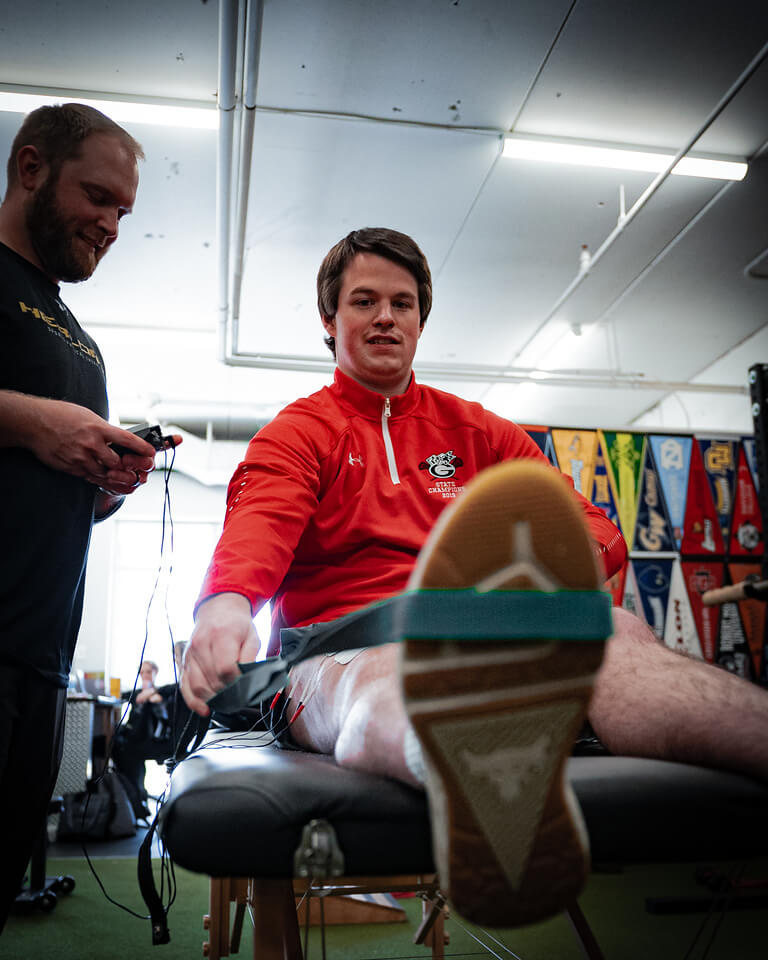Professional Metatarsal Fracture Treatment
At Herlong Sports Physical Therapy, we specialize in the treatment and rehabilitation of metatarsal fractures. Our team of experienced physical therapists will work closely with you to create a personalized treatment plan designed to restore strength, mobility and function. Whether your injury occurred during a sport or everyday activity, we are here to help you recover quickly and safely.

Types of Metatarsal Fractures
Metatarsal fractures can occur in different parts of the bone and may vary in severity. Understanding the type of fracture you have is essential for creating an appropriate treatment plan. Below are the different types of metatarsal fractures:
First Metatarsal
The first metatarsal is located at the base of the big toe. Fractures in this area are often caused by direct trauma, such as stubbing your toe or from overuse in athletes. These fractures may require more extensive treatment due to their importance in walking and stability.
Second Metatarsal
The second metatarsal is the longest of the five metatarsals and plays a key role in balancing the foot. Fractures here are common in high-impact sports like running or basketball. The second metatarsal can be particularly vulnerable to stress fractures.
Third Metatarsal
Fractures of the third metatarsal may result from trauma, stress or excessive weight-bearing activities. While it is less common for this bone to break, fractures of the third metatarsal can still cause significant discomfort and pain.
Fourth Metatarsal
The fourth metatarsal fracture is typically caused by direct impact or twisting motions. These fractures may result in bruising, swelling and difficulty walking. Treatment for these fractures can vary depending on severity.
Fifth Metatarsal
The fifth metatarsal is located on the outer edge of the foot and is particularly prone to injury. One type of fifth metatarsal fracture, known as a Jones fracture, is a more serious break that occurs near the base of the bone. This fracture is often associated with sports-related injuries and may require more intensive management and rehabilitation.
Metatarsal Fracture Causes
Metatarsal fractures can result from a variety of causes. Some of the most common include:
Trauma or Impact
A direct blow to the foot, such as dropping something heavy or a sports-related collision, can lead to a fracture.
Overuse or Stress
Repetitive stress from high-impact activities like running, dancing or jumping can cause stress fractures in the metatarsals.
Twisting or Rolling of the Foot
A sudden twist or abnormal movement, such as rolling the ankle, can result in a metatarsal fracture.
Medical Conditions
Conditions like osteoporosis or certain bone diseases can increase the likelihood of fractures.
Improper Footwear
Wearing shoes that do not properly support the foot can contribute to fractures, especially when engaging in physical activity.
Metatarsal Fracture Symptoms
The symptoms of a metatarsal fracture can vary depending on the severity and location of the injury. Common symptoms include:
- Pain and tenderness in the foot, especially when walking or standing
- Swelling and bruising around the injured area
- Difficulty bearing weight on the foot or walking normally
- Deformity or misalignment of the bone in some cases
- Stiffness or limited range of motion in the foot
If you are experiencing these symptoms, it’s important to consult with a healthcare professional to determine the extent of the injury and the best course of treatment.
Metatarsal Fracture Management and Treatment
The treatment for a metatarsal fracture will depend on the type, location and severity of the injury. Treatment may include:
1. Rest and Ice
In the initial stages, rest and ice may be recommended to reduce swelling and relieve pain.
2. Immobilization
A cast or boot may be used to immobilize the foot and allow the bone to heal properly.
3. Surgical Intervention
In severe fractures, particularly with the fifth metatarsal (such as a Jones fracture), surgery may be required to realign and stabilize the bone.
4. Pain Management
Over-the-counter pain relievers or prescription medications may be recommended to manage pain during the healing process.
5. Physical Therapy
Once the fracture has healed sufficiently, physical therapy is critical to regain strength, flexibility and range of motion.
Metatarsal Fracture Rehab Exercises
After the initial healing period, rehabilitation exercises are crucial to ensure a full recovery. Physical therapy for metatarsal fractures may include:
Range of Motion Exercises
Gentle stretching and movement of the foot to restore flexibility and prevent stiffness.
Strengthening Exercises
Targeted exercises to rebuild the muscles in the foot and leg, which can help prevent further injury.
Balance and Stability Training
Exercises to improve foot coordination and prevent falls as you regain full function.
Gait Training
Working with a physical therapist to relearn how to walk properly after the fracture has healed.
With the right rehabilitation program, you can return to your normal activities with strength and confidence.

